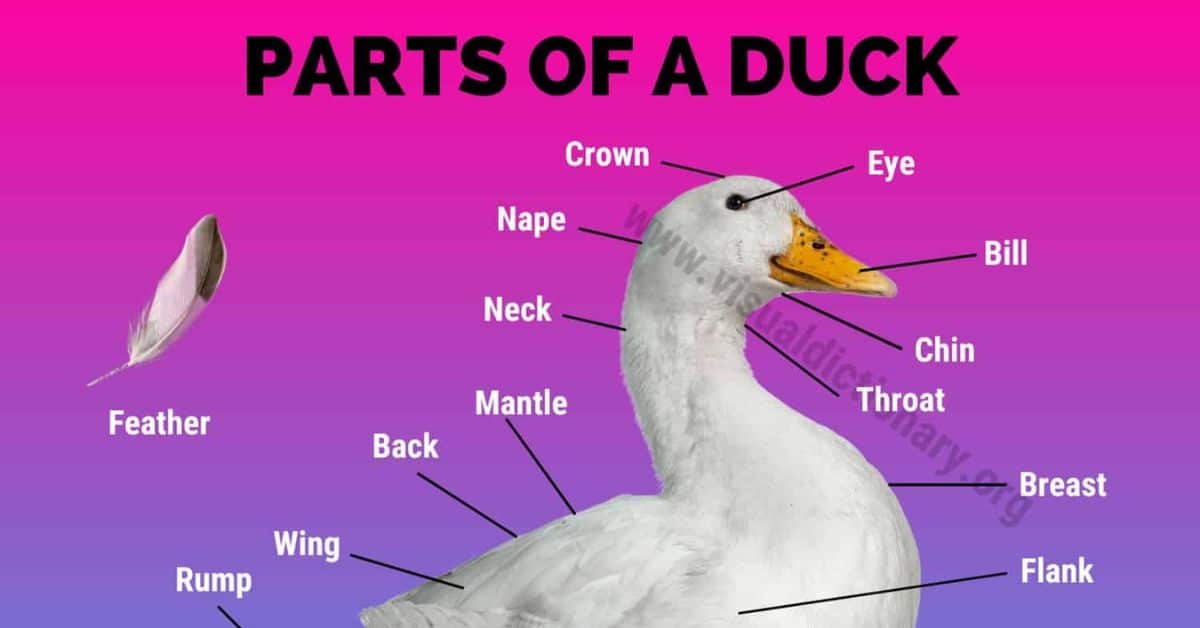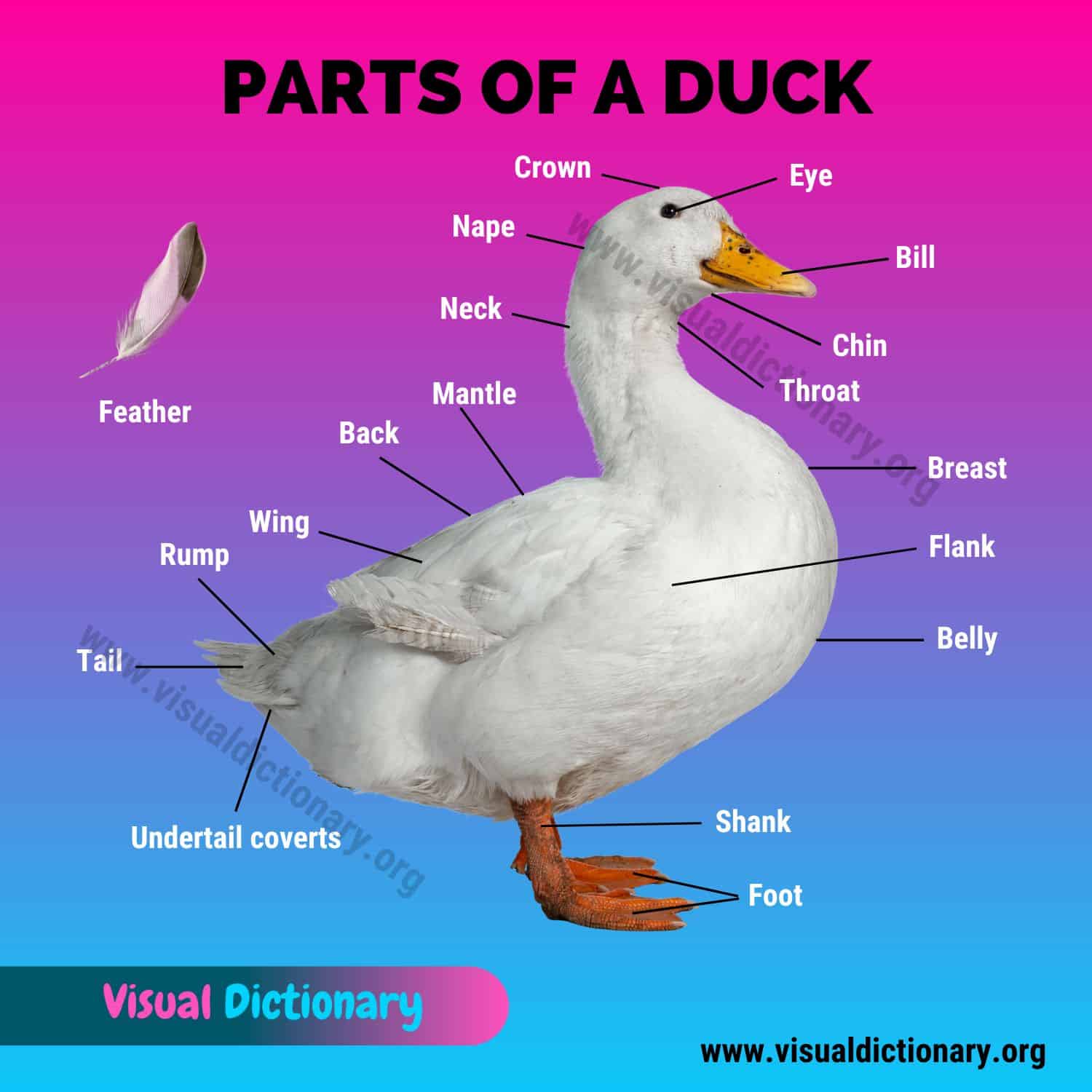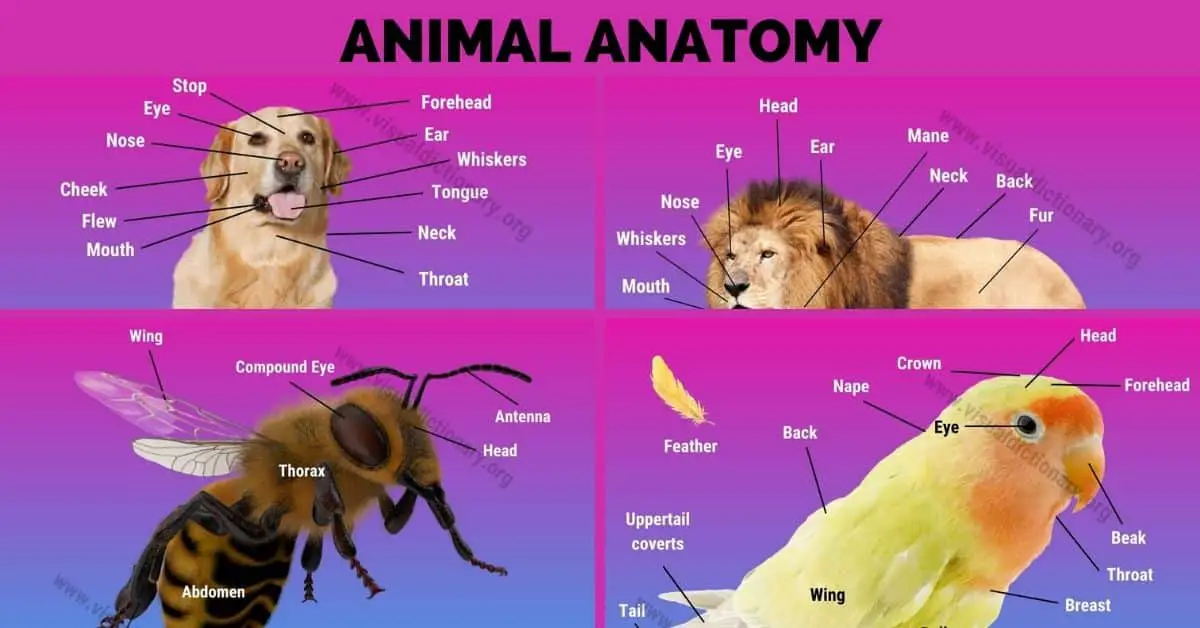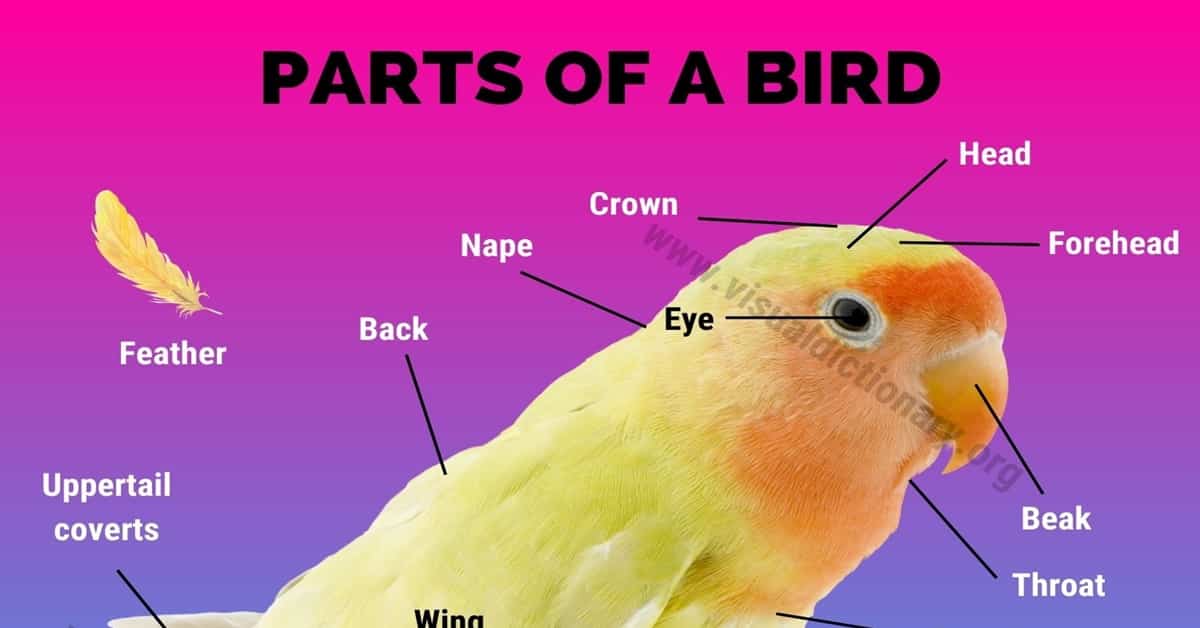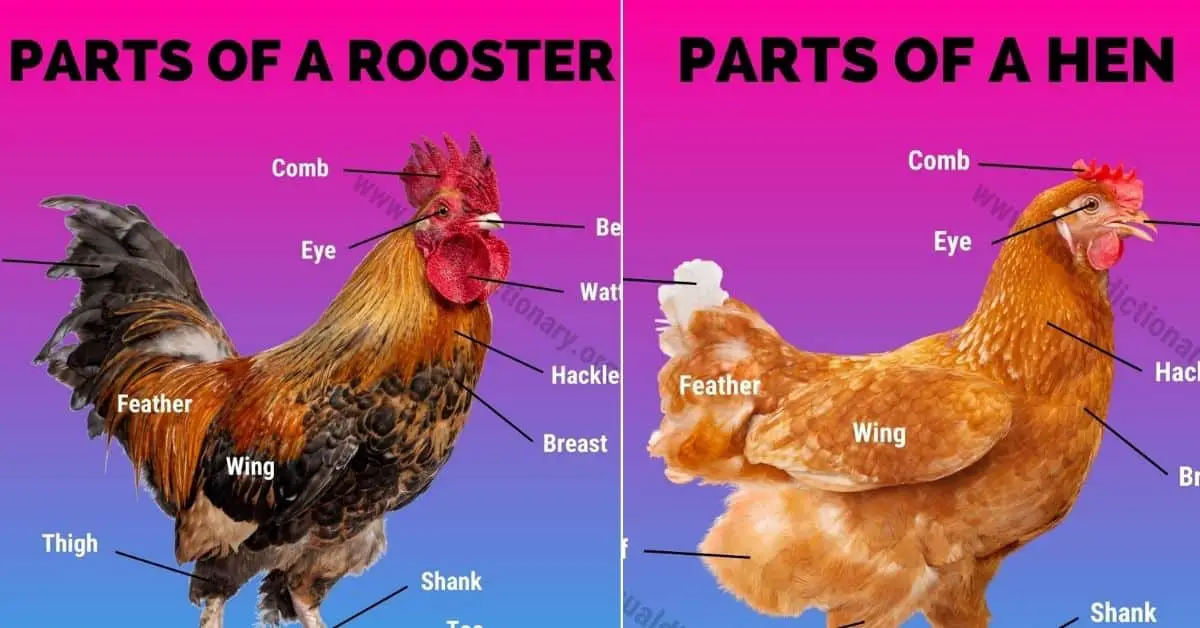Welcome to our article about parts of a duck! As English learners, it’s important to expand our vocabulary and knowledge about the world around us. And what better way to do that than by learning about the fascinating anatomy of ducks?
In this article, we will explore the external and internal features of ducks, including their feathers, beaks, wings, and more. By the end of this article, you’ll have a better understanding of the different parts of a duck and their functions. So, let’s dive in and discover the secrets of duck anatomy!
Table of Contents
Ducks
Ducks are aquatic birds that belong to the Anatidae family. They come in different sizes, shapes, and colors, but all ducks share some common characteristics.
One of the most noticeable features of a duck is its bill, which is flat and broad, and helps them filter food out of the water. The bill also serves as a tool for preening feathers and communicating with other ducks. Ducks have webbed feet that are adapted for swimming and diving. The webbing between their toes helps them paddle through the water with ease.
Ducks have a streamlined body that is covered in feathers. The feathers serve multiple purposes, such as insulation, waterproofing, and flight. Ducks have two types of feathers: contour feathers and down feathers. Contour feathers are the outermost layer of feathers that provide shape and color to the bird. Down feathers are the soft, fluffy feathers that lie close to the skin and provide insulation.
Ducks have wings that are structured with multiple layers of flight feathers, which allow them to fly efficiently. The primary feathers are the longest, while the secondary feathers are shorter. Ducks also have a layer of covert feathers, located at the top of the wings, that protect the flight feathers.
In terms of size, ducks can range from small to large. The smallest duck is the pygmy duck, which is only about 13 cm long and weighs around 40 grams. The largest duck is the muscovy duck, which can grow up to 86 cm long and weigh up to 7 kg.
Parts of a Duck
Bill
The bill of a duck is an important part of its anatomy. It is used for feeding, preening, and communication. The bill is made up of two parts, the upper and lower mandibles. It can vary in size, shape, and color depending on the species of duck.
Head
The head of a duck is a unique feature. It is small in size and has a round shape. The eyes of a duck are located on the sides of its head, giving it a wide field of vision. The head is also home to the duck’s ear openings, which are covered by feathers.
Body
The body of a duck is covered in feathers, which are used for insulation and waterproofing. The body is divided into several parts, including the neck, breast, and back. The wings of a duck are attached to the body and are used for flight.
Legs and Feet
The legs and feet of a duck are adapted for swimming. They are located near the back of the body, which helps the duck move through the water. The feet of a duck are webbed, which helps them paddle through the water more efficiently.
Tail
The tail of a duck is used for balance and steering while in flight. It is made up of several feathers, which are arranged in a fan-like shape. The color and shape of the tail feathers can vary depending on the species of duck.
Duck Anatomy
Head and Neck
Bill
The bill is a prominent feature of a duck’s head. It is flat and broad, and its shape is designed to help the duck filter food out of the water. The bill’s color and markings can vary depending on the species of duck. Some ducks have a slightly thicker tip on the bill, called the nail.
Eyes
Ducks have small eyes on the sides of their heads. Unlike humans, ducks have a 360-degree view of their surroundings. They can see objects both in front of and behind them without moving their heads. This unique feature helps them detect predators and avoid danger.
Ears
Ducks have small ear openings located behind their eyes. These openings are covered by feathers, which protect the ears from water and debris. Ducks have excellent hearing and can detect sounds from far away, making it easier for them to locate food and avoid danger.
Neck
The neck of a duck is flexible and allows the duck to move its head in various directions. It is also an essential part of the duck’s anatomy during flight. When a duck is flying, it tucks its head back into its body, reducing drag and making it more aerodynamic.
Body
Wings
The wings of a duck are its primary means of transportation. They are structured with multiple layers of flight feathers, which allow them to fly efficiently. The primary feathers are the longest, while the secondary feathers are shorter. Ducks also have a layer of covert feathers, located at the top of the wings, that protect the flight feathers. These feathers are strong and flexible, allowing ducks to fly long distances without getting tired easily.
Feathers
Feathers are a defining characteristic of birds, and ducks are no exception. Ducks have a layer of feathers that covers their entire body, providing insulation and protection from the elements. The feathers are also responsible for the duck’s buoyancy in water. The feathers on a duck’s body are divided into two types: down feathers and contour feathers. Down feathers are soft and fluffy, while contour feathers are more rigid and provide shape to the duck’s body.
Chest
The chest of a duck is where the breast muscles are located. These muscles are responsible for the duck’s ability to fly and swim. The chest is also where the duck’s heart and lungs are located. The heart pumps blood throughout the body, while the lungs provide oxygen to the blood.
Back
The back of a duck is where its spine is located. The spine runs from the neck to the tail and is made up of individual vertebrae. The back muscles are responsible for the duck’s ability to move its wings and swim. The back is also where the duck’s kidneys and digestive system are located.
Tail
The tail of a duck is made up of several feathers that are arranged in a fan-like shape. The tail feathers are used for steering and braking during flight and swimming. The tail is also where the duck’s oil gland is located. This gland produces oil that the duck spreads over its feathers to make them waterproof.
Legs and Feet
Legs
Duck legs are relatively short and strong, with powerful muscles that allow them to move quickly both in water and on land. The legs are attached to the body at the hip joint, which is located high up on the bird’s body. This placement gives ducks a more streamlined shape when swimming and helps them to move more efficiently through the water.
Feet
Duck feet are perhaps the most distinctive feature of these birds. The webbing between their toes helps to distribute the bird’s weight evenly across the surface of the water, making it easier for them to swim. The webbing also acts as a paddle, providing extra propulsion when the bird kicks its feet.
In addition to their webbing, ducks also have claws on the end of each toe. These claws are used for gripping onto surfaces when walking on land and for grasping prey when hunting.
Ducks also have specialized tendons in their feet that allow them to lock their toes into place when standing on one leg. This helps to conserve energy and maintain balance, especially when the bird is sleeping.
Parts of a Duck | List
- Undertail coverts
- Throat
- Tail
- Scapular
- Rump
- Neck
- Nape
- Mantle
- Foot
- Flank
- Eye
- Ear
- Crown
- Chin
- Breast
- Bill
- Belly
- Nostril
- Shank
- Wing
- Back
- Rump
- Feather
- Bean
Frequently Asked Questions
What are the different external parts of a duck?
Ducks have a variety of external features that help them survive in their environment. Some of the most noticeable parts include the beak, eyes, wings, feet, and feathers. The beak is used for feeding and can vary in shape depending on the species of duck. The eyes are located on the sides of the head and allow them to see in almost all directions. The wings help ducks fly and maneuver through the air, while the feet are webbed and adapted for swimming. Finally, feathers provide insulation, waterproofing, and aid in flight.
What is the function of the different body parts of a duck?
Each body part of a duck serves a specific function. For example, the beak is used for feeding, the eyes for seeing, and the wings for flying. The feet are webbed and help ducks swim, while the feathers provide insulation and waterproofing. Additionally, ducks have a uropygial gland at the base of their tail that secretes oil, which they spread over their feathers to keep them waterproof.
What are the different internal parts of a duck?
Ducks have a variety of internal organs that allow them to survive and thrive in their environment. Some of these organs include the heart, lungs, liver, stomach, and intestines. The heart pumps blood throughout the body, while the lungs allow for respiration. The liver helps with digestion and detoxification, while the stomach and intestines are responsible for breaking down food.
What are the different parts of a duck’s wing?
A duck’s wing is made up of several parts, including the humerus, radius, ulna, carpals, metacarpals, and phalanges. These bones work together to allow the wing to move and provide lift during flight. Additionally, ducks have primary and secondary feathers that help with maneuverability and control in the air.
What is the body structure of a duck?
Ducks have a streamlined body structure that is adapted for swimming, diving, and flying. Their body is covered in feathers that provide insulation and waterproofing, while their webbed feet and flattened bill are adapted for swimming and feeding. Additionally, ducks have a lightweight skeleton and powerful muscles that allow them to fly and maneuver through the air.
Related terms:
